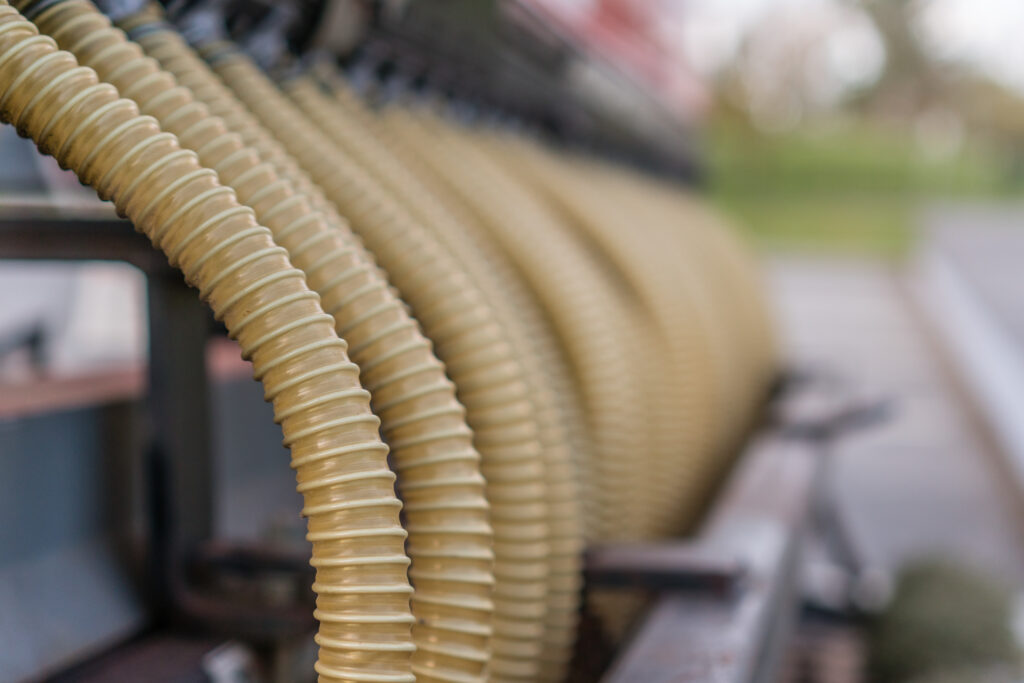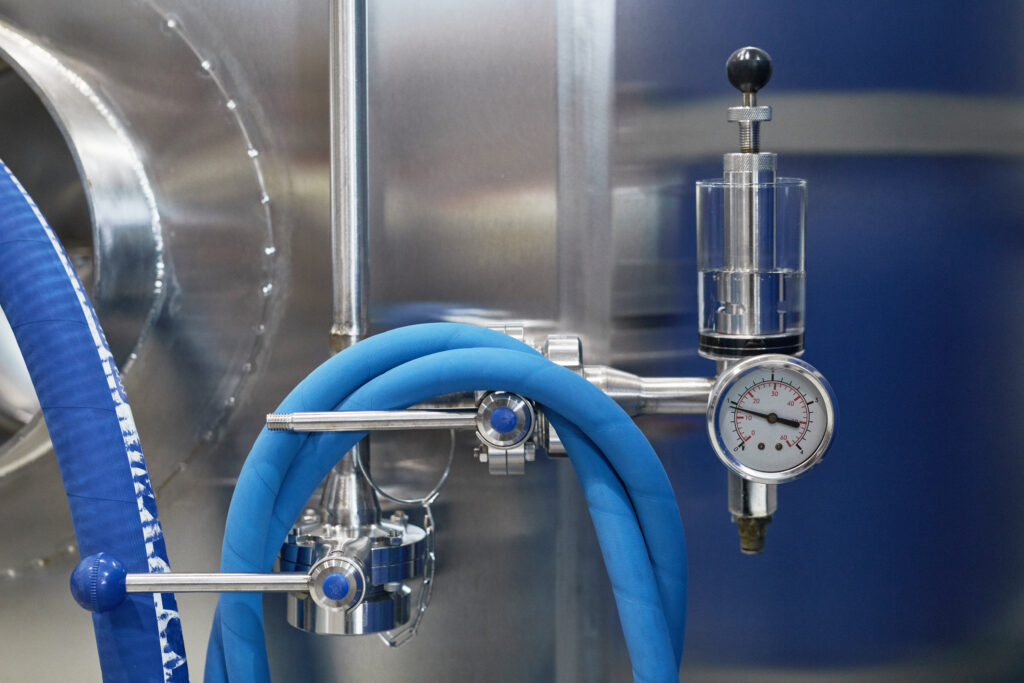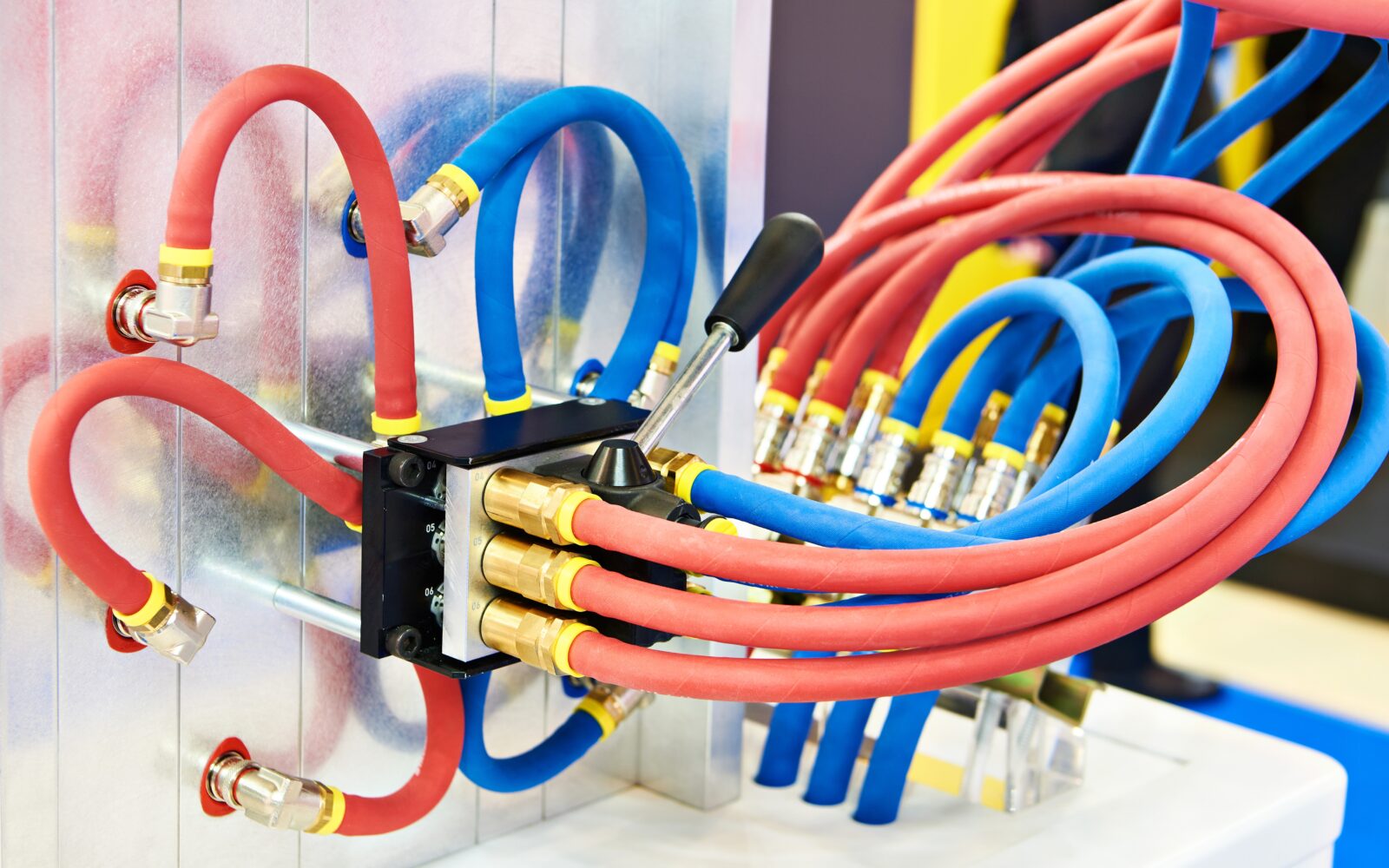Selecting the correct hose and ensuring it is installed correctly is essential for maintaining safety, longevity, and performance. One key aspect of proper hose selection and installation is understanding the minimum bend radius.

What Is Minimum Bend Radius and Why Is It Important?
The minimum bend radius is the smallest diameter to which a hose can be bent without causing internal kinking, flattening, or structural damage. Exceeding this limit can compromise flow efficiency, cause material degradation, and reduce the lifespan of the hose. It is critical to follow manufacturer guidelines for bend radius specifications to ensure safe operation.
What Factors Affect a Hose’s Minimum Bend Radius?
Several factors influence the minimum bend radius, including:
Hose Material: Rubber materials, like SBR, NBR, & EPDM, offer greater flexibility, while thermoplastic & metal hoses have a more rigid bend radius.
Reinforcement Type: Hoses with multiple layers of reinforcement, such as braided or spiral-wound hoses, have different bending tolerances.
Operating Temperature: High temperatures can soften materials, increasing flexibility, while low temperatures can make hoses more rigid and prone to cracking.
Internal Pressure: A hose under high pressure is more resistant to bending and may require a larger bend radius.
How Can Exceeding the Minimum Bend Radius Affect Hose Performance?
If a hose is bent beyond its recommended radius, several issues can arise:
Kinking: This can restrict flow, leading to reduced efficiency and increased pressure buildup.
Structural Damage: Excessive bending can weaken the hose walls, leading to premature wear and failure.
Leaks & Ruptures: Repeated over-bending increases the risk of leaks and potential system failure.

Best Practices for Proper Hose Installation
To maximize hose life and maintain safe operation, follow these installation tips:
Use the Largest Possible Bend Radius: When installing hoses, ensure they are routed with a generous bend radius to minimize stress.
Avoid Sharp Bends Near Fittings: Over-flexing within 18 inches of a hose fitting is a common cause of failure. Utilize strain relief options to support the hose in critical areas.
Use Hose Supports & Guides: Clamps, brackets, and other support mechanisms can help maintain proper positioning and prevent over-bending.
Consider Temperature & Pressure Conditions: Ensure that the hose’s bend radius is appropriate for the actual operating environment.
Inspect & Replace Worn Hoses Regularly: Routine inspections can identify wear, leaks, or damage before they lead to failure.
Where Can You Find the Right Hose for Your Needs?
By understanding the importance of minimum bend radius and following proper installation guidelines, you can extend the lifespan of your hoses and maintain safe, efficient operations. To find the best hose for your application, contact our experts now to find the right hose for your application.








